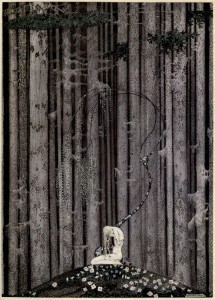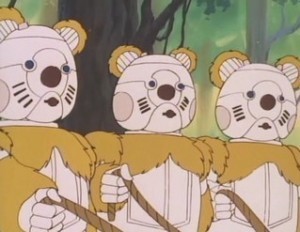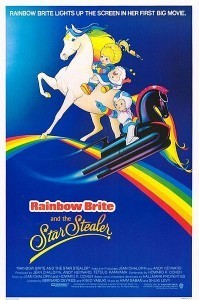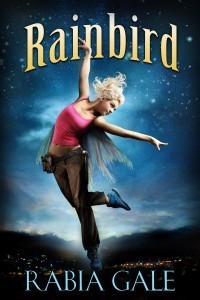Rabia Gale's Blog, page 19
September 20, 2012
Wired, out now
A cybernetic Rapunzel in a post-apocalyptic world has plans of her own
Now available at Amazon US | Amazon UK | Barnes & Noble | Smashwords
A few things about Wired:
It’s a short story, about 4600 words long
You can read it for free on this site. Just go to the Works page and look under the Onsite Fiction heading
It’s free on Smashwords, but 99 cents on Amazon and B&N. That’s because those sites don’t allow me to set the price at zero. They may price-match, but I have no control over that.
And, last but not least, I hope you enjoy it!

September 19, 2012
back to school for writers: Lisa Lawler on the Celts
Welcome to the Back to School for Writers blog series. Every Wednesday until the end of September, a guest poster will share their knowledge and expertise on a specific topic. Today’s guest is Lisa Lawler, who corrects common misconceptions about the Ancient Celts.
Many writers, particularly those writing fantasy, draw on the Celtic culture for inspiration for their novels, and often give an inaccurate view of the Celts, based on many of the mistakes (and sometimes even forgeries and overactive imaginations!) of earlier writers and scholars.
For instance, there are ‘beliefs’ about the Celts that come from the scholars of the sixteenth and seventeenth centuries who looked to the newly-discovered New World and the Native American people as a framework for what their prehistoric Celtic ancestors were like.
Then, later on, when a separate national identity and culture became important to the people of Celtic descent, a romanticized view of the Celts came into existence.
In this post, I’ll take a look at some of the more popular myths of the Celtic culture and what the historical and archaeological evidence and literature reveals.
1. The Celts were not Wiccan.
The Celts were not Wiccan. For instance, it would have been impossible for a Celt to honor the tenet ‘An it harm none, do what you will’ because Celts did not think in terms of individual will. They were taught to respect the gods and goddesses and to live in harmony with the world around them. They were taught that duty to and the wellbeing of the tribe was of the utmost importance.
Wicca features the four Classical Greek elements of earth, air, fire and water. The cosmology of the Celts featured three spheres – land, sea and sky.
Wiccans see the sun as a symbol of the masculine principle and the moon the feminine principle. Celts had both solar and lunar gods and goddesses.
It appears that the Celts incorporated aspects of shamanic practice in their beliefs. For instance, in the literature, some famous warriors could travel to and from the Otherworld while still alive in quest of knowledge, and both warriors and Druids could shape-shift.
Another aspect of shamanic belief is that every aspect of Nature was Divine to the Celts. The Otherworld was not separate from the physical world.
2. Druid was not a title given only to a member of the priesthood.
The Druids who were seers and soothsayers were concerned with the spiritual wellbeing of their people and read omens and portents. They also made sure the people paid the proper respect to the gods and respected all life. But there was more to the Druids than that.
The Druids were the professional class of society, the Aes Dána (ACE DAW-nah), which included lawyers, judges, teachers, counselors, musicians, poets, healers, astronomers and so on. They were distinct from the Warrior class, the Ruling class, the craftsmen and freemen.
There were three levels of Druid, known today as Druid, Ovate, and Bard. In Ireland they were Druí (dree), Fáidh (Fawth with a hard th), and File (FILL-eh).
The romantic image of Bards as wandering minstrels singing cheerful songs is not accurate. A bard’s role in society was much more important than simply entertaining an audience. They remembered the genealogies of the ruling families (the longer they were, the more prestigious the family), the important historical events and great achievements of the champions and kings, and they could make or break a king’s reputation depending on how he treated them.
Druids were the only people who were free to travel the length and breadth of Ireland, regardless of tribal boundaries.
There are accounts of Druids who were physicians, skilled in the prescription of herbs. They also performed surgery including caesarean sections and amputations.
3. Kingship was not inherited by primogeniture.
Kingship was not passed from father to eldest son. The king had to be a strong man in both body and mind so that he could protect his people from both external and internal strife.
The derbfhine (DURV-in-ah)(a group usually made up of three generations of the royal family) had to agree who their leader would be. They usually chose a man from within three generations of the previous king’s family. i.e. a cousin, brother, uncle or grandson.
Frequently, a king would still be in power when his successor was elected so that there would be no misunderstandings or fighting. This second-in-command was known as the tánaist (TAW-nisht).
Kings also had to be renowned for their generosity and feasting. A mean king or chieftain reflected badly on the tribe as a whole.
Kings could have no physical blemish. There are several versions of the story of a king with horse’s ears who desperately needed to keep this secret. It is also why Nuada of the Silver Hand could not be elected king of the Tuatha Dé Danann (TOO-ha day DON-un, a race of people who lived in Ireland before the Celts) until such time as a new hand of flesh and blood was made for him.
For the Brythonic Celts, such as the Picts in Scotland, kingship may have been based on matrilineal descent.
4. The Celtic Tree astrology is not an ancient system of divination developed and used by the Druids.
The Celtic Tree astrology was, in fact, developed in the twentieth century by a poet by the name of Robert Graves and presented in his book The White Goddess which was published in 1946.
The Druids were astronomers of renown, and would certainly have looked to the stars for auspicious moments to conduct an important activity. There is evidence, for example, that the building of a new house was governed by the stars. But while the Druids named some Ogham letters after trees, it was Graves (using only 13 letters of the 25-letter alphabet) who decided to link these letters and trees to lunar months and then further link them to constellations. Celtic Tree astrology is no older than the twentieth century.
5. The Celtic Druids did not build Newgrange or Stonehenge (or any other megalithic structure).
Newgrange in Co. Meath in Ireland is older than the pyramids in Egypt by a thousand years. The Celts arrived in Ireland in or around 600BC. Newgrange had already been built and was still standing and being used by the people who had inhabited Ireland long before the Celts arrived.
In the twelfth century, Geoffrey of Monmouth created the story that the stones of Stonehenge were transported magically from Ireland by a druid called Merlin.
In the late seventeenth century, John Aubrey realized that Stonehenge was not a Roman monument, but because he could not find any other explanation for it, he believed it to have been a temple for the ancient Britons. After that Stonehenge appeared in illustrations connected with the Druids, like the one that appeared in Godfrey Higgins’s The Celtic Druids in 1827.
Dr William Stukeley, in 1740, published a book based on the “druidic temple” ideas of Aubrey and others, but also put forward many other wild claims.
The Celts did not build Newgrange nor did they build Stonehenge.
The Celts did not build temples to worship in, preferring the sacred spaces in nature like springs, wells and groves.
You may have found information here that surprised you or confirmed what you already knew, but I hope that it serves as a good starting point for further research. The books by Peter Beresford Ellis are probably a good place to begin, and for the whodunnit-lovers, he has also written The Sister Fidelma Mysteries (featuring a female Druid in seventh century Ireland) under the name Peter Tremayne.
Lisa Lawler lives with her husband and son in Western Australia and loves books to distraction. She believes our thoughts create our reality, that the shortest distance between two points is a straight line, and that what we do is not as important as who we are while we are doing it.
She blogs at www.liselmsdiary.blogspot.com.

September 17, 2012
so, what’s going on with Rainbird?
A few weeks ago, I drew back the curtains on my latest work-in-progress (and next self-published ebook).
Rainbird is a science fantasy novella that grew out of a short story I wrote last year. My protagonist, Rainbird, is both strong and vulnerable, generous and impulsive, determinedly cheerful in trying circumstances but, like everyone else, has her blind spots. The setting is the sunway, a gigantic track made from the bone of an immense dragon upon which this world’s artificial sun moves. Betrayal and love, atonement and duty are some of the themes of the story.
I have a cover for this book. I’ve had it beta-read, and two more people have said “yes” to reading it for one last spit-and-polish. I’m less than ten pages away from finishing version 4 of the story.
And I’m afraid to release it.
I didn’t recognize the fear, at first. I was going great guns on my latest pass through Rainbird when I just–stopped. And I haven’t touched it for almost a week.
I told myself that it was because we got sick (true). I told myself it was because we were busy (also true). I told myself I needed to work on another project whose deadline is coming up very soon (that too).
But those reasons merely disguised the real one: fear.
Fear that it will disappoint my readers. Fear that it will be savaged by reviewers. Fear that it will sink my fledgling career. Fear that it’s not perfect. I feel that if I only hold on to it a bit longer, it will magically become so.
Times like this I need to go read Kristine Kathryn Rusch’s wonderful post on perfection. I cried–or at least got teary-eyed–when I first read it. There is no such thing as a perfect story. There is no such thing as story that everyone, everywhere will love. There are just good stories that find their own fans.
As for Rainbird? I love this story. Some–not all–of my beta readers love this story. I know that I’ve done my best with it, and there is no way to make it better without tearing out its heart and turning it into something altogether different.
It’s time to kick the twin demons of Fear and Perfectionism to the curb. It’s time to get on with my copyedit so Rainbird can go seek its audience. It’s time to stop clinging and let go.
So, what’s going on with Rainbird?
It’s coming out this fall. Soon. Watch this space for the release date.
Rainbird never belonged. To one race, she’s chattel. To the other, she’s an abomination that should never have existed.
She lives on the sunway.
High above the ground, Rainbird is safe, as long as she does her job, keeps her head down, and never ever draws attention to herself.
But one act of sabotage is about to change everything.
For Rainbird. And for her world.

September 15, 2012
I have the awesome-est people in my life
Like, for example, my sister-in-law, Robin Cornett, photographer and web designer, who makes me look good online.
Exhibit #1: This website. Robin customized the theme, found the header image, made the cute buttons on the right, hunted down with the fonts, and did a lot of plugin stuff on the backend, half of which I know nothing about. She pays attention to the little details, the things that make the site stand out.
Exhibit #2: Book covers. Like this one she put together for Wired (which, by the way, is now FREE on Smashwords. Enjoy!).
If you look closely (click the image to enlarge), see if you can spot the cool touch she added to the texture of this cover. (Again, it’s all in the details.)
Exhibit 3: Headshots! I am terrible about pictures. I don’t take ‘em and I don’t have ‘em taken. But I’ve know for a really really REALLY long time that I should have a nice author picture. Robin to the rescue again. Here are the two choices she sent me. Which one do you like?
So, if you need a website redesign or a family photographer in the Chattanooga, Tennessee area, you know who to go to, right? 
Thank you, Robin!

September 14, 2012
spectacular solar flare images
NASA’s Solar Dynamic’s Observatory captured this cool shot of a long filament of super-heated plasma erupting from the sun.

Credit: NASA/SDO/AIA/GSFC
And here’s the same eruption, captured in different wavelengths of light.

Credit: NASA/SDO/AIA/GSFC
Any of these images would make great cover art for the right science fiction novel. The raw explosive power shown here is scary-awesome.

September 12, 2012
back to school for writers: Veronica Valli on addiction and recovery
Welcome to the Back to School for Writers blog series. Every Wednesday until the end of September, a guest poster will share their knowledge and expertise on a specific topic. Today’s guest is Veronica Valli, talking about how alcoholism, addiction, and recovery are portrayed in fiction.
Addiction and Alcoholism
Alcoholism and addiction are ripe issues to explore in fiction as they give so much potential for drama. Addiction is, unfortunately, such a common problem that it’s great that these issues are explored as much as they are. It at least starts a conversation about a difficult subject and, when done well, can be inspiring. But of course, like for experts in many areas, there are always representations of addiction that drive me nuts, some that make me laugh, and some that are spot on.
My favorite soap opera portrayal of a drunk has to be Sue Ellen in Dallas in the 80s. Taking yet another verbal beating from J.R., her chin would wobble and she would reach for the Scotch, her hand shaking, tears welling up in her eyes. “Sue Ellen,” I would sigh at the screen, “grow a backbone for God’s sake. Stand up to the man”. But no, week after week, whatever happened, her first response was to reach for the bottle. As dramatic as this representation is, what they got right is Sue Ellen’s self pity. Alcoholics are full of self-pity. Now that Dallas has been rebooted, we can thankfully discover that Sue Ellen finally got it together and is sober enough to run for Governor of Texas. Way to go, Sue Ellen, you have my vote!
The portrayal of addiction in fiction that drove me the most nuts, however, was James Frey’s novel A Million Little Pieces. I read it after the controversy that it was actually a novel, not a memoir. It didn’t put me off as I’d heard it was a brutal representation of addiction and rehab so I was intrigued enough to read it.
God, I hated it.
I’ve worked in drug rehabs and I’ve never heard of anything like the experiences the main character, James, had. After finally hitting rock bottom, he ends up in rehab and starts his journey of getting clean and sober. Like many addicts, he has neglected to look after himself properly and needs to go to the dentist urgently. Because he is an addict in very early recovery and because pain relief medication has been known to lead addicts to relapse, he has several rotting teeth extracted WITH NO PAIN MEDICATION WHATSOVER!
Are you friggin’ serious?
Yes, it’s absolutely true that addicts need to be very cautious around pain medication, especially narcotic pain meds as they are highly addictive and could lead to relapse. However, there are going to be times in most recovering addicts’ lives that they are going to need to take something stronger than aspirin. I have never heard of any addict having teeth extracted without any pain meds. It’s totally ridiculous. I don’t know what the author was trying to prove here, but it annoyed me so much.
If you want to research some great representations of addiction and alcoholism in movies and TV, I would really recommend Maggie Gyllenhaal in Sherrybaby. She captures the selfishness and self-absorption of an addict. Also check out the magnificent Helen Mirren in the last season of Prime Suspect. Her character slid into alcoholism, and she portrayed an addict’s inner misery and loneliness with spine-tingling accuracy.
There is, however, one fatal flaw in the representation of addiction in nearly all books and movies that is so far away from what really happens, it makes me want to scream. This flaw is that the addict/alcoholic is ‘saved’ from their disease by the love of a good man/woman. True love conquers all and they are able to slay their demons, overcome their problems, and stay sober because they have fallen in love.
This never happens. Ever.
For sure, recovering addicts and alcoholics hook up with each other and with sober people (who usually promise to save them) all the time. It is one of the things that, as a therapist in a rehab, you are constantly having to deal with. Because it is always, and I mean always, a spectacular disaster that nearly always ends up with the addict relapsing.
Romantic relationships are very tricky for alcoholics and addicts. In early days (and sometimes beyond) we are very insecure and sensitive and have extremely low self-esteem. Can you imagine what a recipe that is for disaster?
When an alcoholic or addict gets sober, they are without the one thing that offered them safety and security. Alcohol and drugs were always there for them; they never let them down. Alcoholics and addicts primarily use substances and alcohol because it changes how they feel. Or, to be more accurate, they use them to take away any uncomfortable, painful or unpleasant feelings. Sure, they also use substances to enhance positive feelings, but the main point is that addicts and alcoholics have no control over their internal emotional lives and therefore have to use external means.
So when they get sober, they are still left with these same feelings and it takes time for them to develop healthy strategies to deal with them. In the meantime, a flirtation, a fling, or a love affair creates intense feelings that temporarily mask all the unpleasant feelings that have still yet to be dealt with. When that first rush of euphoria and lust wears off, the alcoholic or addict becomes desperate to find a way to keep managing their feelings. So they may cling desperately to the person they have formed an attachment to or launch into a series of unhealthy codependent relationships. I very rarely see this side of recovery portrayed in books or films. Ultimately, the relationship is a distraction from the main issues.
As a therapist, it is the one area that people need to know more about. I see a LOT of unhealthy relationships based on need and fear rather than love and respect. Movies and books are responsible in many ways for creating this impossible ideal that someone else will save you. The truth is that only you can save yourself. Recovery from alcohol or drugs is really about the journey you take to uncover the feelings and emotions you can’t cope with, the ones that drove you to drink.
As a final note, I’d really like to see more portrayals of people successfully overcoming addiction or alcoholism. Full recovery is entirely possible, with many people living full and authentic existences free from alcohol and drugs. Full-blown addiction is a horrifically ugly place to be (Irvine Welsh’s book Trainspotting springs to mind). Recovery can really be described as the exact opposite to that, which is probably why not many people portray it. Happiness tends not to be so dramatic.
Veronica Valli is a recovered alcoholic, therapist and Life Coach. She has worked in clinics and private practice in the UK and is currently finishing her book Why We Drink and How To Stop, which focuses on the spiritual and emotional aspects behind alcoholism. Find her online at http://veronicavalli.com.

September 10, 2012
dear pinterest, let’s just be friends
Several weeks ago, I posted about my passionate fling with Pinterest and my subsequent reconsideration of my relationship (addiction?) in the cold light of day. The last time you tuned in (to the soap opera), I had deleted all my boards save one and put some distance between myself and its oh-so-pretty site (“Stay away from him! He’s not good for you!”).
Why, yes, I can flog that relationship metaphor past death.
However, Pinterest does have some good things going for it. I love that it’s visually, not verbally, oriented. I adore, and am inspired by, pictures, but I work with words. Wordsmithing is wonderful and joyous, but it is also hard and frustrating. Pinning, though, is pure play, a relaxing hobby, like scrapbooking without the mess.
In the past weeks, I’ve developed a healthier relationship with Pinterest. I’ve set boundaries, in terms of time and content, on my pinning. I am cautious about what I pin and where it comes from. Here are some of my guidelines:
1. I pin images that have a “Share via Pinterest” button next to them. DeviantArt and Etsy are two big sites that have enabled pinning. Many retailers and photo sites also have Pin It buttons.
2. I pin pictures that are in the public domain or available under the creative commons license. NASA’s space photos and illustrations on Project Gutenberg are two examples.

A haunting illustration by Kay Nielsen for the fairy tale East of the Sun and West of the Moon. From Project Gutenberg.
3. If I find I an image I really want to pin and I don’t see a yay-or-nay Pinterest policy on the site, I email the copyright holder for permission. Author and illustrator Susan Paradis graciously gave me permission to pin some of the gorgeous interior illustrations from her picture book, Snow Princess.
4. I don’t repin unless I can follow the internet trail back to the original copyright holder to check if it’s okay. I automatically mistrust images from Tumblr or those that have been uploaded by user (unless the user is clearly the copyright holder).
5. I feel safe pinning book covers as they are advertising materials (and if it’s wrong to post book cover images, then a lot of us who review or otherwise blog about books are in big trouble!).
It’s not a perfect system and there are a lot of lovely pictures I’ve passed up, but these guidelines let me enjoy Pinterest with a clear conscience.
So, come check out my Pinterest boards and show me yours. If you pin, link to your account in the comments. I love to admire other people’s boards!

September 7, 2012
here be dragons
Working hard on Rainbird at the moment, and I have dragons on the brain. Not the cute cuddly kind, nor the telepathic loyal-forever-and-ever sort.
No, these dragons are big and scary. Beware of them.
It does not do to leave a live dragon out of your calculations, if you live near him.
~ J. R. R. Tolkien, The Hobbit
Do not meddle in the affairs of dragons, for you are crunchy and taste good with ketchup.
~ Unknown

September 5, 2012
back to school for writers: Liana Mir on insurance companies
Welcome to the Back to School for Writers blog series. Every Wednesday until the end of September, a guest poster will share their knowledge and expertise on a specific topic. Today’s guest is Liana Mir, who takes us behind the scenes of the insurance industry.
The Big, Bad Insurance Company
The insurance industry has been demonized a lot over the years for good reasons and bad, all painted with the same nasty brush due to several common misconceptions about how it works and due to the fact that insurance is not what I would consider the best way to pay for regular health care. Insurance should generally be kept for emergencies
That said, I went to work for the largest national health insurer maybe five years back and stayed there for three years. In that time, I learned that many of my own misconceptions about insurance, particularly dental insurance, were wrong.
Myth #1: Claims are Processed by People
This is startlingly false and is the foundation for most of the horror stories that circulate regarding insurance.
Reality: Your insurance claims are processed by a system and are then troubleshooted by people. That means that most claims never get a pair of human eyes. The computer reads what is dumped in by your health care provider, interprets the claim with varying degrees of accuracy, then uses a set of rules generated from your plan, your group (i.e. employer, association, etc.), and your state’s laws. Unless the system finds an error it cannot resolve or you or your provider call in about the claim or explanation of benefits, that baby will never see the light of day.
Myth #2: Insurance Companies Don’t Care
We have all heard of the big bad that does not want to pay for “cosmetic” or experimental procedures that are actually necessary. We know that insurance companies drag their feet over coughing up the money you have paid into their coffers for such a time as this. What we rarely hear about is what the people behind that computer system are actually up to.
Reality: The truth is that insurance companies do care about your satisfaction and wellbeing. Quite a lot, as a matter of fact! They have competition.
Insurance companies make money off of their customers being well and healthy and will gladly pay for any reasonable preventative care they can convince you to use. They scrutinize their bottom line and reputation extremely carefully and evaluate any mishandled claim that comes to their attention. They try to train their customer service representatives to be genuinely helpful and knowledgeable, even though those same reps will not be able to grant you an exception to the rules.
Insurance processors, in particular, scrutinize every problem claim with two things in mind: preventing fraud (you would be surprised how many billions of dollars are lost on health care fraud each year) and helping patients get their money. We read those handwritten notes (though the computer doesn’t, so don’t hedge your bets) and research their validity. If you told me that for health reasons you couldn’t get any x-rays taken to prove you need an expensive procedure, then I would most certainly send back a request for more information on why we just paid for x-rays three months back. And that brings me to…
Myth #3: Your Provider Knows What He’s Doing
Often times, you would rather not submit an insurance claim if the provider can fill it out for you. After all, they know how to fill it out correctly, right?
Reality: The biggest issue I ran into with paying claims was that providers entered information in the wrong fields, skipped fields altogether, failed to provide their address or keep their account with the insurance company up-to-date, or worse, repetitively returned a request for more information with a copy of the same information-less claim. What could I do for their patient? By the rules, nothing. If we had low call-volume in customer service, every once in a while I could get someone to call and drag out the information we needed. To say nothing of the claims sent in to the wrong insurer altogether.
When I got my own dental work done, I filed my own claim.
Myth #4: Insurance Companies Don’t Pay Up as Promised
This comes back pretty solidly to the issues inherent with using a computer system and a lot of human error. Computer systems will screw up payments due to human error on the claims, and human error is rampant.
Reality: Insurance will pay according to those nasty little things called rules. And trust me, as an insurance processor, it was a pain to try to go around the rules to get something paid anyway. Computers aren’t very flexible.
There are three main aspects to getting a claim paid:
Know what your benefits are before getting treatment. Get a pre-certification or pre-approval on your claim or call up the company and ask them whether said treatment is actually covered. If it isn’t, ask whether there is another plan that will cover it. There usually is.
Fill out the form correctly. If your provider fills it out, ask to look it over before he or she sends it and make sure it’s as accurate and complete as possible.
Use the phone. Want to make sure a human sees that claim and processes it correctly? Call up customer service and follow up on your claim. You can get a status report and most minor errors corrected. If you have too much trouble, escalate the claim. You can get almost anything paid once it hits a senior manager.
Insurance companies do pay up, but only what has been promised.
Myth #5: All Insurance Companies Do It the Same
For a long time, I believed that dealing with one big, bad insurance company that refuses to pay without giving you a hassle is the same as dealing with any other one. The more I coordinated with other companies’ benefits and received health care myself, the more I realized this idea is patently false.
Reality: Every insurance company has its own way of trying to protect the bottom line. Automation is primary, but automation leads to glitches. Systems can be set up to pend the most expensive varieties of glitches or automatically pay or deny according to what will cost the least. My insurance company ate several thousands of dollars annually to pay for any duplicate requests for a particular kind of x-ray because it would have been significantly more expensive to pay for a human to look at every incident of such a common claim.
Some insurance companies deny all expensive or major procedures without really looking at them, then pay literally anything if the claimant calls in. Some insurance companies hold all such procedures and have them manually reviewed for necessity or prerequisites, denying for more information as needed. One is a reactive strategy, and the other is preemptive, but most strategies can all be gotten around by one thing: a phone call.
Unless your claim looks suspicious, most processors and customer service agents want to pay your claim, but they won’t do it if the plan you picked says they can’t unless you’ve got a great reason they can take to their boss for an exception. Most claims will never be seen by a human, so if your claim got denied, read the explanation of why and make sure the computer or your provider didn’t screw up on the form. And as a writer, please take these things to heart when you write about the little desk job insurance employees who will never see their customers in person but who do want to help. If you really want that evil insurance overlord, just make it the computer.
Liana Mir reads, writes, and wrangles the muses from her mundane home in the Colorado Rockies and, occasionally, from the other side of the Barrier. Visit her online at http://www.lianamir.com.

September 3, 2012
childhood influences: why I write what I do
In the past few weeks, I posted about why I think I write science fantasy. When that turned out to be a discussion on how to define the genre, I went on to elaborate how the different languages and vocabularies of fantasy and science fiction are blended in science fantasy.
Today I have a confession: The reason why I write science fantasy has very little to do with a reasoned, thoughtful approach to writing fiction and everything to do with my childhood influences. Behold.
(Note: science fiction elements in red, fantasy in blue, science fantasy in purple)
Exhibit A: ThunderCats
Feline humanoids with super powers flee their dying planet in spaceships and crash-land on another planet. There they encounter new friends (unicorn-herding sorcerers, warrior maidens, galactic cops, and robotic fruit-harvesting bears), make a powerful new enemy (a five-thousand-year-old living mummy), and build a fortress and a cool tank. Their leader, a hotheaded young warrior with a magic sword, is constantly in and out of trouble.

These robotic bears must run on ethanol
Exhibit B: Rainbow Brite and the Star Stealer
A magical girl who brings spring to earth travels across the universe to confront an evil space princess who is bent on adding a diamond planet to her collection of jewels. Features talking horses, both real and robotic, robots and spaceships, lizard creatures and magical belts.
I may have been one of the few people who, upon learning of the discovery of this planet, exclaimed, “They found Spectra!”

“Nobody can own Spectra! It’s the light of the whole universe!”
Exhibit C: Warriors of the Wind
I know, I know this is the horribly-mangled English-language version of Nausicaa of the Valley of the Wind, but I loved it as a kid and I don’t care that it cut out all the heavy-handed environmentalism. I’m grateful to the newer English version of Nausicaa for clearing up some plot points that had always puzzled me, but the dialog of Warriors of the Wind was funnier and I knew most of it by heart.
So. Blurb: In a post-apocalyptic world taken over by a toxic jungle and giant insects, a small peaceful kingdom is brutally attacked by a warlike state (with airplanes, tanks, and guns) when an ancient weapon is uncovered within its borders. Nausicaa, the princess of the Valley of the Wind, who has a strange connection with the giant insects, struggles to bring peace between the nations, and between humanity and the denizens of the jungle. There is also a prophecy.

I covet that glider.
It’s no wonder that I write genre soup, happily tossing fantasy and science fiction elements into my fiction.
What were your childhood influences? How have they affected your writing or other art?









